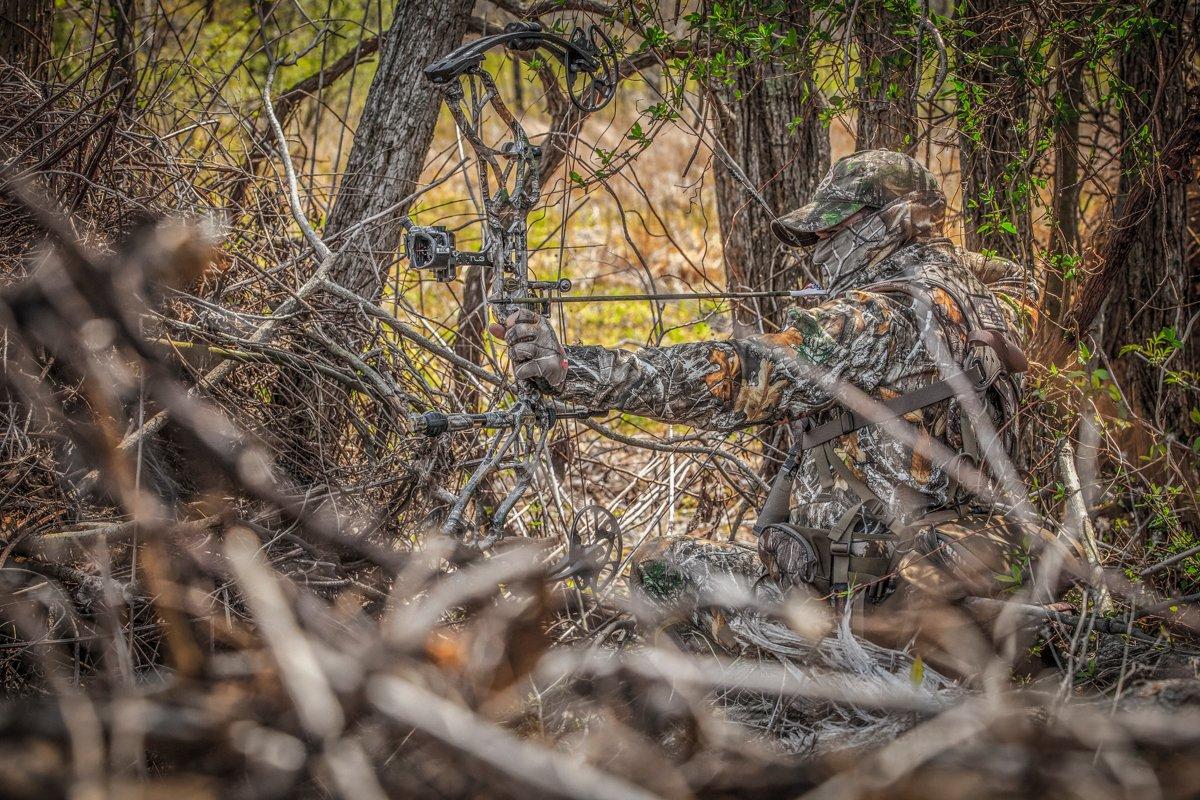Do You Chase Autumn Flocks with a Stick and String?
When another hunter asks me if I've bowhunted much, I always reply: "Yep, for turkeys."
A second or two passes, accompanied by a puzzled look, which prompts the next question:
"Deer too?"
"Nope, I've mostly concentrated on turkeys," is my grinning reply. And I've done much of it in fall.
Here, There, Everywhere
As a truly hardcore turkey hunter, and I say this with just a little ego and pride, I've hunted the big birds across much of the United States, in over half the states available to us, and even down in Mexico. I've done DIY deals for much of it, but have also had plenty of help from outdoor-industry friends in this effort.
I love hunting, watching, eating and thinking about wild turkeys. Spring, fall and winter, I've been out there, where legal, chasing birds. It's fair to call this an addiction I share with many. Heck, I even watch hens with poults all summer . . .
That said, let's get back to the bowhunting for fall turkeys deal. Why bother? Here are some upsides and downsides to the deal.
Bowhunt spring turkeys? Go here.
The Truth
Opportunity. That's the main reason. Fall (and winter) bow seasons for wild turkeys are often long and generous.
Full disclosure though: I'm the first to say bowhunting turkeys isn't the best way to anchor a bird. A shotgun does that. Boom. Down. Dead. A good bow shot may still see the gobbler fly off, only to die some time later. Woodsmanship is required to find such birds.
What's the answer?
Practice, practice, practice so you're comfortable with your archery equipment. Read posts like this. Talk to other bowhunters. Fine-tune your equipment. Be ready. The wild turkey deserves as much.
Read More: How to Hunt Fall Turkeys
Study Those Birds
Pattern fall turkeys that fly down and move to predictable feeding zones each day. Establish a blind somewhere between point A (the roost) and B (the food source).
Get in there early and wait for action to come to you.
Damp droppings tell you fall birds were there recently. Concentrated feathers can indicate a roost site when slightly dispersed, or a predator kill when tightly compacted in a small area. Mixed sets of new and old tracks indicate flocks use the area regularly. Raked areas in the woods, especially along field edges or in food plots, often indicate autumn feeding zones.
Bowhunting on foot? That's always been my favored approach for fall turkeys with archery tackle. If so, put your bow down where you can find it again. Use terrain to gain a tactical position, then run at the flock. If you've successfully scattered an autumn group, a traditional fall turkey hunting approach, quickly study the terrain again and pick a calling setup that chances at drawing turkeys to you from many directions as they regroup.
Since fall opportunities are often all-day affairs, gravitate toward those roosting sites in late afternoon to intercept birds before fly-up time.
Get in there late and take your best shot. If not, you'll know where to hunt those fall turkeys the next morning.
Why Fall Turkeys?
Bowhunting seasons for turkeys are often generous, offered in spring, fall and winter, state depending. Be sure to check yours, as seven states only allow spring turkey hunting; and Alaska offers no season.
I've truly enjoyed hunting the New Hampshire fall turkey bowhunting season over the years, which runs from Sept. 15 to Dec. 15 annually. Tough to complain about such a generous season, eh? To be honest, I've learned a great deal doing it, even from the mistakes.
The misses, and there have been many - at close range, on open ground, without a blind - are bittersweet recollections. Experience matters most in turkey hunting. Finding, calling and watching wild turkeys over such a long period of time, year after year, educates a guy.
Yep, mistakes teach plenty. I wouldn't change a thing.
Want more? 13 Advanced Tips for Bowhunting Turkeys
More Realtree turkey hunting. Follow us on Facebook.
Steve Hickoff writes on wild turkey hunting for Realtree.com.







